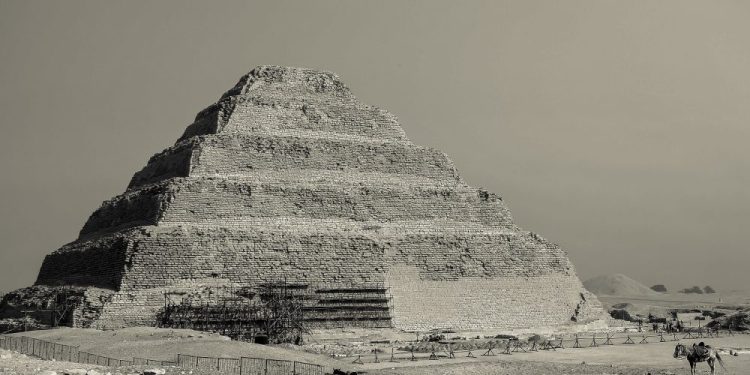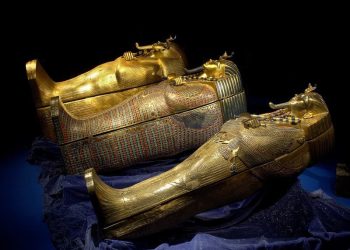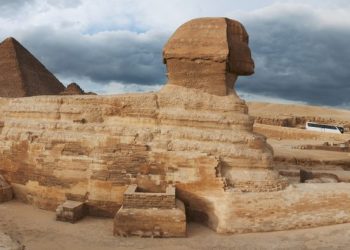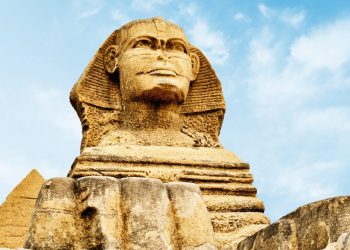Long before the Great Pyramid of Giza was built, an ancient Egyptian pharaoh of the 3rd dynasty during the Old Kingdom and the founder of this epoch called Netjerikhet revolutionized Egypt in ways that perhaps even history is unappreciative of.
Djoser, as he would later come to be known, is the man that changed Egypt forever, leaving an imprint in history. He was the man who, together with his royal vizier and architect Imhotep, would come to build the first ancient Egyptian pyramid in history, The Step Pyramid of Saqqara.
The Step Pyramid of Djoser was a building that revolutionized Egypt in more ways than one. It was the largest construction project attempted in ancient Egyptian history, but it also involved a massive underground construction effort that would dwarf the pyramid complex above the surface.
The Pyramid of Djoser, the Pyramid complex, and accompanying plazas, temples, and buildings were massive, but what lay beneath the ground was even more impressive. Before Imhotep came up with the design of the Step Pyramid, and even before Djoser had chosen Saqqara as the place where the revolutionary structure would be built, Egypt had seen larger structures built, but most of them were constructed using mudbrick and wood, and stone would be used in very small amounts.
Evidence of that is the ancient Egyptian Mastabas, ancient burial places that the Egyptians built for thousands of years.
As noted by scholars, the concept of ancient Egyptian pyramids results from centuries of development and experimentation. Ancient Egyptian pyramid building reached its zenith when the Great Pyramid of Giza was finished. Pyramids that followed it, like the Pyramid of Khafre of the Pyramid of Menkaure, were certainly important but not as impacting as the Pyramid of Khufu.
Texts Mentioning Ancient Egypt’s Oldest Pyramid
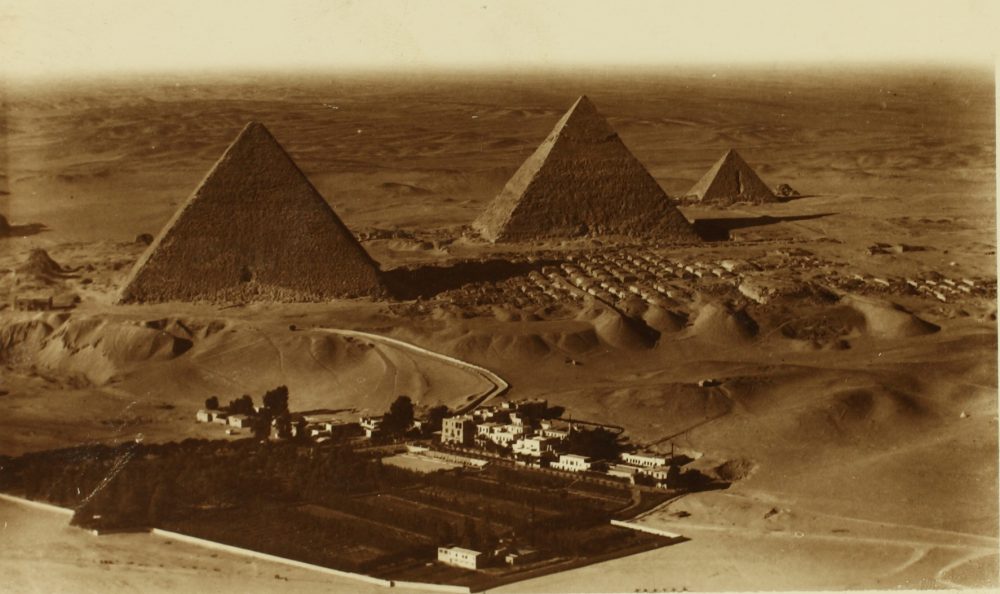
Mastaba, a predecessor to pyramids
It is argued among archaeologists and Egyptologists that mastabas were ancient Egyptian tombs and that after thousands of years of building mastabas as burial places for royalty and ordinary people, the ancient Egyptians all of a sudden deviated from their mastaba design, and during the reign of Djoser, created a burial that was unseen of; the Step Pyramid. Therefore, experts maintain that all pyramids that followed Djoser’s were intended as tombs for the Pharaohs.
The tombs of the first historical pharaohs of Egypt were discovered by archaeologists at Abydos in Upper Egypt, more than 350 miles south of Cairo. Abydos was the ancient Egyptian royal necropolis of the southern capital, This or Thinis. The tombs built there were found to date back to around 3,200 BC.
Just about the same time, the Saqqara necropolis sprung out on the desert plateau west of Egypt’s northern Capital, Memphis. Royal tombs were built at Abydos and Saqqara, although the Pharaoh could only be buried in one. Therefore, it is argued that some tombs acted as cenotaphs while others were the real deal.
The First Pyramid
Mastabas were built until the beginning of the Third Dynasty around 2,780 BC when history in Egypt changed forever. With the arrival of King Djoser, many new changes were implemented in Egypt, and archeological changes were the most notorious. Although Djoser followed tradition and built a massive mastaba made of mudbrick at Abydos, he would turn to Saqqara and kick-start a construction project that would forever be imprinted in history.
The structure built at Saqqara was the direct result of the vision and ingenuity of a young architect among Djoser’s officials, a man called Imhotep. His revolutionary vision was picked up by Djoser, who eventually gave him free hands in building the structure at Saqqara, and Imhotep made sure he would not disappoint.
Imhotep would build a 6-tier four-sided structure recognized as Egypt’s earliest colossal stone building. It was a structure unlike any other, resulting in a building that looked like one mastaba superimposed on another six times, reaching a height of 62.5 meters, clad with well-polished white limestone.
But this weird structure is believed to have started as a mastaba. But as noted previously, the building of the Step Pyramid is thought to have undergone several changes and phases. Before the builders had constructed the first mastaba–the bottom layer of the pyramid, they sank a shaft in the rock, some 28 meters deep and 7 meters square. Then, at the bottom of the shaft, they built an oblong chamber of granite blocks and added a tunnel extending northwards a little over 20 meters.
This tunnel would have had its entrance outside of the original mastaba. However, the chamber would only be reached through a hole in the ceiling from a limestone room above it. Archeologists have discovered the granite plug that closed off the hole inside the chamber and has been calculated to weigh more than 3 tons, measuring two meters in height.
The original mastaba design was then extended. When the builders decided to build an additional structure above the first one, they had to add to the ground area for the superstructure and did so on the northern side.
This caused the original entrance to be blocked. Another entrance was built farther north, with steps and a large tunnel leading beneath the ground.
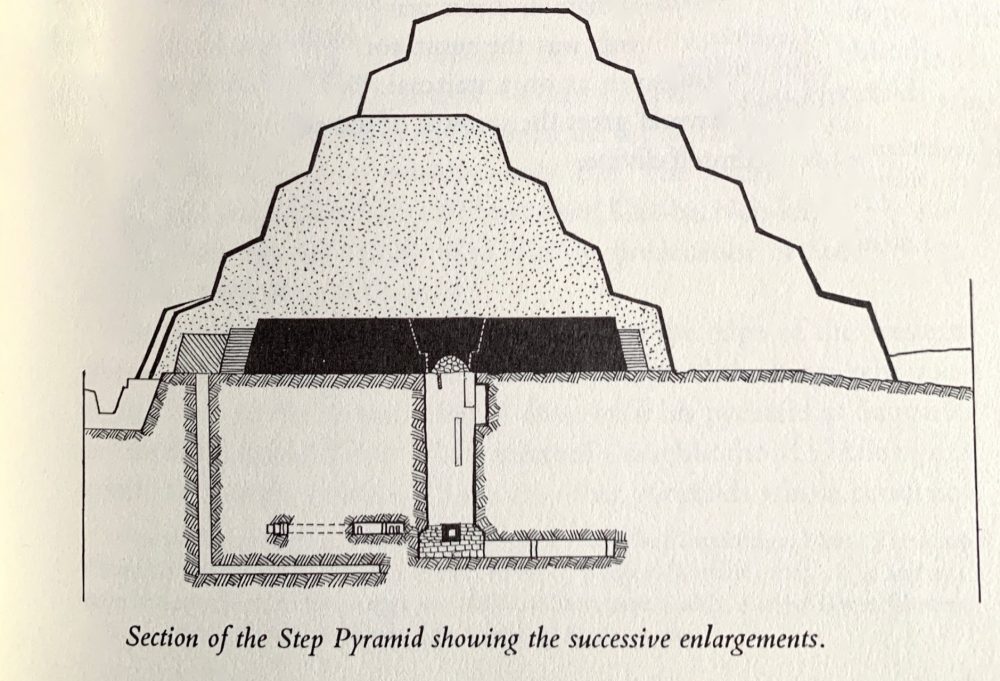
The mastaba Imhotep had produced was revolutionary, but he would not stop there.
The royal architect would add to the structure not long after the first superstructure was completed. Imhotep’s first alteration to the Step Pyramid is thought to have been an extension of around three meters to all sides. The second extension is believed to have been another expansion on the eastern side–about nine meters–and turned the structure into a square-shaped building.
The workers proceeded then to extend each side for another three meters. Once completed, the structure had four mastabas built on each other.
The four-stepped structure was completed, and Imhotep turned toward designing the surrounding temples. But he returned to the pyramid for another final alteration, adding two more mastabas on top of the previous four. This resulted in a structure measuring 140 meters from east to west and around 120 meters from north to south. The Step Pyramid, cased with beautiful white limestones, is believed to have stood 60 meters.
An underground world
While the entire Pyramid complex of Djoser is fascinating on its own, what was built beneath it is equally mind-bending.
Just how did ancient builders using some of the most primitive tools of the time, excavate and build a massive 6.7-kilometer-long underground world beneath the first pyramid of Egypt?
Archeologists argue; that with a lot of work and patience. Djoser’s Step Pyramid is impressive because it is the first colossal stone monument in Egypt and left an imprint in ancient Egyptian architecture. But equally impressive, although not nearly as popular, are the countless rooms, tunnels, shafts, and chambers beneath the pyramid.
It is truly fascinating to know that more than 4,700 years ago, an unknown number of builders was sent out to the construction site where the Step pyramid would be built to excavate and remove—on a previously unknown scale—5.7 kilometers (3.5miles) worth of shafts, tunnels, chambers, galleries, and magazines.
This is mind-boggling on its own because until the reign of Djoser, a construction project of this magnitude had never been attempted before.
The builders of the Pyramid complex created a fascinating pyramid complex above the ground and beneath it, as they built a massive subterranean world that not one Pharaoh would manage to repeat in the coming ancient Egyptian generations. Not even the Great Pyramid of Giza, built several generations after Djoser features such an intricate and complex underground world.
Djoser’s pyramid was revolutionary on many levels.
Not only did Imhotep introduce massive stones in architecture, but the Step Pyramid also changed the style of ancient Egyptian architecture, presenting a revolutionary building shape.
The imposing Pyramid complex of Djoser at Saqqara was so complex that not one Pharaoh after Djoser until Sneferu managed to build a Pyramid successfully. This only tells us that building a pyramid in ancient Egypt was not easy, and it required incredible architectural and engineering skills.
Although it has been argued that the Step Pyramid was the eternal resting place of Djoser, the mummy of the Pharaoh has never been discovered, just like the many mummies of future Pharaohs like Sneferu, Khufu, Khafre, or Menkaure, which were also supposedly buried within their pyramids.
In addition to the fact that the mummy of King Djoser is missing, another mystery is that no written texts mention the design, construction, or completion of the Step Pyramid.
This is strange for several reasons. First, the Step Pyramid, the pyramid complex, and the massive structure beneath it was a project of such an unheard scale that never before had anyone attempted it. It was unseen until the reign of Djoser.
Surely someone would have found the need to write something down, on stone, on a rock, or anywhere near the structure, to leave it as evidence of a time that changed Egypt. The ancient Egyptians were excellent record keepers, so why did they decide not to record a revolutionary, history-changing project such as the construction of the first pyramid of Egypt?
There isn’t one ancient document that mentions the design, the construction phases, or the completion of the Step Pyramid.
We don’t know how the builders of the Third Dynasty constructed the pyramid of Djoser. We don’t know what technologies were used and how massive blocks of stones were transported. However, it is widely accepted that ramps were probably used to raise the heavy stones to construct the pyramid. Many plausible models have been suggested, although no physical evidence of said ramps has been found near the pyramid.
Is it not strange that Egypt’s Step Pyramid changed its architecture introducing large stones, different design elements, and unprecedented architecture, and that no one found the need to record any of that?
Join the discussion and participate in awesome giveaways in our mobile Telegram group. Join Curiosmos on Telegram Today. t.me/Curiosmos



